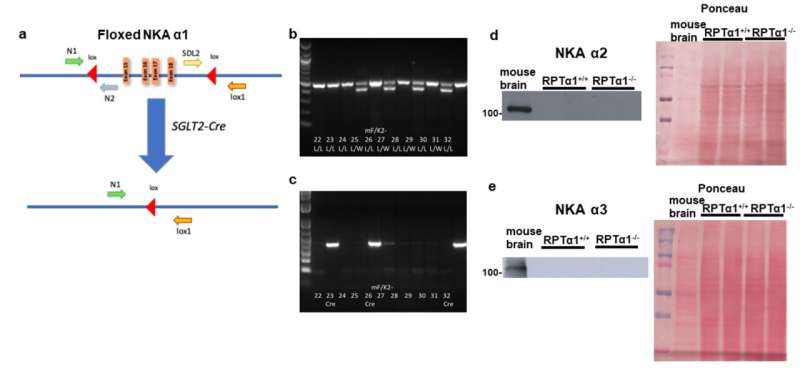Study reveals new insights into body salt handling

by Marshall University Joan C. Edwards School of Medicine

A new study led by Marshall University researchers focuses on a novel mechanism of the body’s regulation of salt balance.
The kidney plays a central role in the body’s ability to maintain an appropriate sodium balance, which is critical for the determination of blood pressure. Disorders of sodium balance contribute to the development and progression of many common diseases, including hypertension, heart disease and stroke.
Na/K-ATPase (NKA) is the enzymatic machinery that drives absorption of sodium along the renal proximal tubule. As such, it makes quite an unlikely candidate as a molecular counteractor of sodium absorption. In contrast, the Xie model for NKA receptor/signaling, named for the late Zijian Xie, Ph.D., predicts that NKA has evolved as the perfect molecular entity to sense intracellular sodium and coordinate the cellular response to temper absorption and maintain a steady delivery to the distal tubule.
Using gene targeting in cells and mice to test the respective contributions of NKA signaling and ion pumping to the overall regulation of renal sodium reabsorption, the study revealed that NKA signaling is functionally dominant over NKA ion pumping in the control of renal sodium reabsorption, according to new research published earlier this month in The FASEB Journal.
“This paper represents a major advance and a paradigm shift in renal physiology/mammalian salt handling,” said Sandrine Pierre, Ph.D., interim director of the Marshall Institute for Interdisciplinary Research and the corresponding author on the study. “To date, it is the most tangible proof of the validity and physiological significance of the Xie model for sodium pump signaling.”
Expertise in renal physiology and genetic approaches in experimental models to evaluate the non-classical Na/K-ATPase receptor function was provided by a cross-departmental team of investigators from the Marshall Institute for Interdisciplinary Research (MIIR) and the Joan C. Edwards School of Medicine. Xie, a pioneer of NKA non-ion pumping function, was a driving force behind this project from its inception.
“Developing the first genetic mouse model targeting NKA in renal proximal tubule cells has allowed us to unmask the dual antagonistic roles of NKA in renal Na+ and water reabsorption,” said Shreya Mukherji, Ph.D., a scientist in the rare disease DDU at Takeda Pharmaceuticals U.S.A., Inc. and first author on the study, who conducted major portions of this research as a biomedical graduate student at Marshall University.
“However, this is just a stepping stone. Using similar approaches, our group and others will likely dissect new regulatory networks and identify new targets in the management of hypertensive disorders and other highly prevalent chronic conditions.”
More information:
Shreya T. Mukherji et al, Na/ K‐ATPase signaling tonically inhibits sodium reabsorption in the renal proximal tubule, The FASEB Journal (2023). DOI: 10.1096/fj.202200785RR
Provided by
Marshall University Joan C. Edwards School of Medicine
Citation:
Study reveals new insights into body salt handling (2023, March 31)
retrieved 31 March 2023
from https://medicalxpress.com/news/2023-03-reveals-insights-body-salt.html
This document is subject to copyright. Apart from any fair dealing for the purpose of private study or research, no
part may be reproduced without the written permission. The content is provided for information purposes only.





